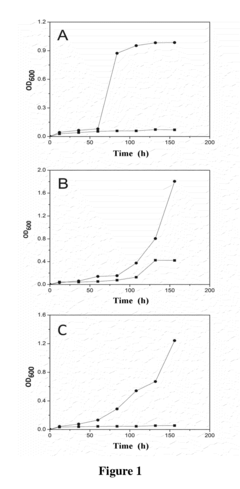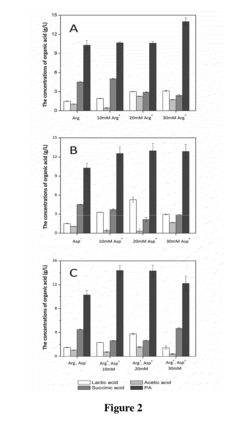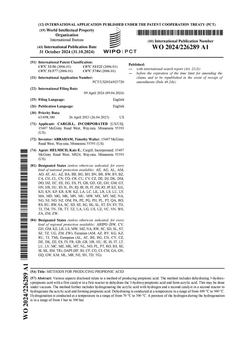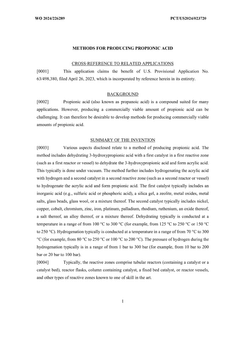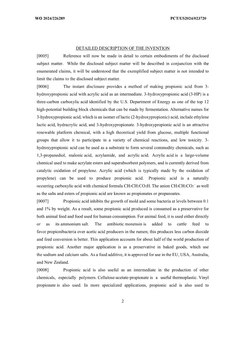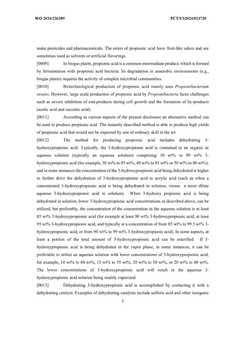How to Harness the Power of Propionic Acid in Technological Domains?
JUL 3, 20259 MIN READ
Generate Your Research Report Instantly with AI Agent
Patsnap Eureka helps you evaluate technical feasibility & market potential.
Propionic Acid Tech Evolution and Objectives
Propionic acid, a versatile organic compound, has been utilized in various industries for decades. Its journey from a simple fermentation byproduct to a key player in technological domains showcases the evolution of industrial chemistry and biotechnology. The historical development of propionic acid production methods reflects the broader trends in chemical engineering, moving from petrochemical-based processes to more sustainable bio-based approaches.
Initially discovered in the 19th century as a component of dairy products, propionic acid's potential was gradually recognized in the early 20th century. The first commercial production methods relied on petrochemical feedstocks, primarily using the Reppe process or oxidation of propanal. These methods, while effective, were energy-intensive and environmentally challenging, prompting research into alternative production routes.
The 1980s and 1990s saw a shift towards bio-based production methods, aligning with growing environmental concerns and the rise of white biotechnology. Researchers began exploring microbial fermentation processes, utilizing various bacterial strains to produce propionic acid from renewable resources. This marked a significant milestone in the technology's evolution, opening new avenues for sustainable production.
Recent years have witnessed accelerated research in optimizing fermentation processes, strain development, and downstream processing techniques. The advent of metabolic engineering and synthetic biology has further expanded the possibilities for enhancing propionic acid production. These advancements aim to improve yield, productivity, and purity while reducing production costs and environmental impact.
Looking forward, the objectives for harnessing the power of propionic acid in technological domains are multifaceted. One primary goal is to further increase the efficiency and sustainability of production processes, potentially through the development of novel microbial strains or innovative fermentation technologies. Another objective is to expand the application scope of propionic acid beyond its traditional uses in food preservation and animal feed.
Emerging research focuses on exploring propionic acid's potential in advanced materials, bioplastics, and specialty chemicals. The aim is to leverage its unique properties to create high-value products that can replace petroleum-based alternatives. Additionally, there is growing interest in utilizing propionic acid as a platform chemical for the synthesis of various derivatives with applications in pharmaceuticals, cosmetics, and other high-tech industries.
As we move towards a circular economy, another crucial objective is to integrate propionic acid production into biorefinery concepts. This approach seeks to maximize resource utilization by producing propionic acid alongside other valuable chemicals from renewable feedstocks, potentially even from waste streams. Such integration could significantly enhance the economic viability and sustainability of bio-based production systems.
Initially discovered in the 19th century as a component of dairy products, propionic acid's potential was gradually recognized in the early 20th century. The first commercial production methods relied on petrochemical feedstocks, primarily using the Reppe process or oxidation of propanal. These methods, while effective, were energy-intensive and environmentally challenging, prompting research into alternative production routes.
The 1980s and 1990s saw a shift towards bio-based production methods, aligning with growing environmental concerns and the rise of white biotechnology. Researchers began exploring microbial fermentation processes, utilizing various bacterial strains to produce propionic acid from renewable resources. This marked a significant milestone in the technology's evolution, opening new avenues for sustainable production.
Recent years have witnessed accelerated research in optimizing fermentation processes, strain development, and downstream processing techniques. The advent of metabolic engineering and synthetic biology has further expanded the possibilities for enhancing propionic acid production. These advancements aim to improve yield, productivity, and purity while reducing production costs and environmental impact.
Looking forward, the objectives for harnessing the power of propionic acid in technological domains are multifaceted. One primary goal is to further increase the efficiency and sustainability of production processes, potentially through the development of novel microbial strains or innovative fermentation technologies. Another objective is to expand the application scope of propionic acid beyond its traditional uses in food preservation and animal feed.
Emerging research focuses on exploring propionic acid's potential in advanced materials, bioplastics, and specialty chemicals. The aim is to leverage its unique properties to create high-value products that can replace petroleum-based alternatives. Additionally, there is growing interest in utilizing propionic acid as a platform chemical for the synthesis of various derivatives with applications in pharmaceuticals, cosmetics, and other high-tech industries.
As we move towards a circular economy, another crucial objective is to integrate propionic acid production into biorefinery concepts. This approach seeks to maximize resource utilization by producing propionic acid alongside other valuable chemicals from renewable feedstocks, potentially even from waste streams. Such integration could significantly enhance the economic viability and sustainability of bio-based production systems.
Industrial Applications and Market Demand
Propionic acid has emerged as a versatile compound with significant potential across various technological domains. The market demand for propionic acid is primarily driven by its wide-ranging industrial applications, particularly in the food and feed, pharmaceuticals, and chemical sectors.
In the food industry, propionic acid serves as a crucial preservative, inhibiting the growth of mold and bacteria in baked goods, cheese, and other perishable products. This application has seen steady growth due to increasing consumer demand for extended shelf life and food safety. The global food preservatives market, of which propionic acid is a key component, is experiencing robust growth, propelled by the rising population and changing dietary habits.
The animal feed industry represents another significant market for propionic acid. Its ability to prevent mold growth in animal feed and silage has made it an essential additive in livestock nutrition. As the global demand for meat and dairy products continues to rise, the need for effective feed preservatives like propionic acid is expected to grow correspondingly.
In the pharmaceutical sector, propionic acid and its derivatives find applications in the synthesis of various drugs and as excipients in drug formulations. The expanding pharmaceutical industry, driven by factors such as aging populations and increasing healthcare expenditure, is likely to fuel the demand for propionic acid in this sector.
The chemical industry utilizes propionic acid in the production of cellulose acetate propionate, a biodegradable plastic with applications in packaging and textiles. As environmental concerns drive the shift towards sustainable materials, the demand for such biodegradable alternatives is projected to increase, potentially boosting the market for propionic acid.
Geographically, North America and Europe currently dominate the propionic acid market, owing to their well-established food and pharmaceutical industries. However, the Asia-Pacific region is emerging as a rapidly growing market, driven by industrialization, population growth, and increasing disposable incomes.
The market for propionic acid is characterized by a high degree of consolidation, with a few major players controlling a significant share of the global production. This concentration has implications for pricing and supply dynamics, potentially influencing the adoption of propionic acid in various technological applications.
As industries continue to seek innovative solutions for preservation, sustainability, and efficiency, the versatility of propionic acid positions it as a compound with significant growth potential. The challenge lies in developing new applications and optimizing existing ones to fully harness its power across diverse technological domains.
In the food industry, propionic acid serves as a crucial preservative, inhibiting the growth of mold and bacteria in baked goods, cheese, and other perishable products. This application has seen steady growth due to increasing consumer demand for extended shelf life and food safety. The global food preservatives market, of which propionic acid is a key component, is experiencing robust growth, propelled by the rising population and changing dietary habits.
The animal feed industry represents another significant market for propionic acid. Its ability to prevent mold growth in animal feed and silage has made it an essential additive in livestock nutrition. As the global demand for meat and dairy products continues to rise, the need for effective feed preservatives like propionic acid is expected to grow correspondingly.
In the pharmaceutical sector, propionic acid and its derivatives find applications in the synthesis of various drugs and as excipients in drug formulations. The expanding pharmaceutical industry, driven by factors such as aging populations and increasing healthcare expenditure, is likely to fuel the demand for propionic acid in this sector.
The chemical industry utilizes propionic acid in the production of cellulose acetate propionate, a biodegradable plastic with applications in packaging and textiles. As environmental concerns drive the shift towards sustainable materials, the demand for such biodegradable alternatives is projected to increase, potentially boosting the market for propionic acid.
Geographically, North America and Europe currently dominate the propionic acid market, owing to their well-established food and pharmaceutical industries. However, the Asia-Pacific region is emerging as a rapidly growing market, driven by industrialization, population growth, and increasing disposable incomes.
The market for propionic acid is characterized by a high degree of consolidation, with a few major players controlling a significant share of the global production. This concentration has implications for pricing and supply dynamics, potentially influencing the adoption of propionic acid in various technological applications.
As industries continue to seek innovative solutions for preservation, sustainability, and efficiency, the versatility of propionic acid positions it as a compound with significant growth potential. The challenge lies in developing new applications and optimizing existing ones to fully harness its power across diverse technological domains.
Current Challenges in Propionic Acid Utilization
Despite the promising potential of propionic acid in various technological domains, several challenges currently hinder its widespread utilization and full exploitation. One of the primary obstacles is the high production cost associated with traditional fermentation methods. The current production processes are often energy-intensive and require expensive substrates, making it difficult to compete with petrochemical-based alternatives on a cost basis.
Another significant challenge lies in the purification and separation of propionic acid from fermentation broths. The presence of other organic acids and impurities necessitates complex downstream processing, which adds to the overall production costs and reduces efficiency. Developing more effective and economical separation techniques remains a critical area for improvement.
The relatively low yield and productivity of microbial fermentation processes also pose a substantial hurdle. Current fermentation methods often suffer from product inhibition, where the accumulation of propionic acid in the fermentation medium inhibits further production by the microorganisms. This limitation restricts the achievable concentrations and overall productivity of the process.
Furthermore, the stability and corrosive nature of propionic acid present challenges in its handling, storage, and transportation. Special materials and equipment are often required to prevent degradation and ensure safe handling, which can increase operational costs and complexity.
In terms of applications, while propionic acid shows promise in various fields, there is a need for more extensive research to fully understand and optimize its performance in different technological domains. For instance, in the field of bioplastics, incorporating propionic acid into polymer formulations to enhance biodegradability and mechanical properties requires further investigation and development.
The limited availability of renewable and cost-effective feedstocks for propionic acid production is another challenge. While efforts are being made to utilize waste streams and lignocellulosic biomass, efficient and economical conversion processes are still under development.
Lastly, regulatory hurdles and lack of standardization in some applications of propionic acid can impede its adoption in certain industries. Establishing clear guidelines and safety standards for its use in novel applications, particularly in food and pharmaceutical sectors, is crucial for expanding its market potential.
Addressing these challenges requires a multidisciplinary approach, combining advancements in biotechnology, process engineering, and materials science. Overcoming these hurdles will be key to unlocking the full potential of propionic acid in various technological domains and paving the way for its increased adoption in sustainable and innovative applications.
Another significant challenge lies in the purification and separation of propionic acid from fermentation broths. The presence of other organic acids and impurities necessitates complex downstream processing, which adds to the overall production costs and reduces efficiency. Developing more effective and economical separation techniques remains a critical area for improvement.
The relatively low yield and productivity of microbial fermentation processes also pose a substantial hurdle. Current fermentation methods often suffer from product inhibition, where the accumulation of propionic acid in the fermentation medium inhibits further production by the microorganisms. This limitation restricts the achievable concentrations and overall productivity of the process.
Furthermore, the stability and corrosive nature of propionic acid present challenges in its handling, storage, and transportation. Special materials and equipment are often required to prevent degradation and ensure safe handling, which can increase operational costs and complexity.
In terms of applications, while propionic acid shows promise in various fields, there is a need for more extensive research to fully understand and optimize its performance in different technological domains. For instance, in the field of bioplastics, incorporating propionic acid into polymer formulations to enhance biodegradability and mechanical properties requires further investigation and development.
The limited availability of renewable and cost-effective feedstocks for propionic acid production is another challenge. While efforts are being made to utilize waste streams and lignocellulosic biomass, efficient and economical conversion processes are still under development.
Lastly, regulatory hurdles and lack of standardization in some applications of propionic acid can impede its adoption in certain industries. Establishing clear guidelines and safety standards for its use in novel applications, particularly in food and pharmaceutical sectors, is crucial for expanding its market potential.
Addressing these challenges requires a multidisciplinary approach, combining advancements in biotechnology, process engineering, and materials science. Overcoming these hurdles will be key to unlocking the full potential of propionic acid in various technological domains and paving the way for its increased adoption in sustainable and innovative applications.
Existing Propionic Acid-Based Solutions
01 Production methods of propionic acid
Various methods for producing propionic acid are described, including fermentation processes, chemical synthesis, and catalytic reactions. These methods aim to improve yield, efficiency, and purity of propionic acid production for industrial applications.- Production methods of propionic acid: Various methods for producing propionic acid are described, including fermentation processes, chemical synthesis routes, and catalytic reactions. These methods aim to improve yield, efficiency, and purity of propionic acid production for industrial applications.
- Applications of propionic acid in food preservation: Propionic acid and its salts are widely used as food preservatives due to their antimicrobial properties. They are effective in preventing mold growth and extending the shelf life of various food products, particularly in bakery items and dairy products.
- Use of propionic acid in pharmaceutical formulations: Propionic acid and its derivatives find applications in pharmaceutical formulations. They are used as excipients, pH adjusters, and in some cases, as active pharmaceutical ingredients for various therapeutic purposes.
- Propionic acid in polymer and chemical synthesis: Propionic acid serves as a precursor or intermediate in the synthesis of various polymers and chemicals. It is used in the production of cellulose acetate propionate, herbicides, and other industrial chemicals.
- Environmental and safety considerations in propionic acid handling: Safety measures and environmental considerations for handling, storing, and transporting propionic acid are discussed. This includes proper containment methods, waste management, and strategies to minimize environmental impact in industrial settings.
02 Applications of propionic acid in food preservation
Propionic acid and its derivatives are widely used as food preservatives due to their antimicrobial properties. They are effective in preventing mold growth and extending the shelf life of various food products, particularly in bakery items and animal feed.Expand Specific Solutions03 Use of propionic acid in pharmaceutical formulations
Propionic acid and its salts are utilized in pharmaceutical compositions for various therapeutic purposes. They may be incorporated into drug formulations as active ingredients or excipients to enhance stability, solubility, or bioavailability of certain medications.Expand Specific Solutions04 Industrial applications of propionic acid
Propionic acid finds diverse applications in industrial processes, including the production of plastics, herbicides, and solvents. It is also used in the manufacturing of cellulose acetate propionate and as a raw material for various chemical syntheses.Expand Specific Solutions05 Environmental and safety considerations in propionic acid handling
The handling, storage, and disposal of propionic acid require specific safety measures due to its corrosive nature and potential environmental impact. Innovations in containment systems, neutralization methods, and eco-friendly production processes are being developed to address these concerns.Expand Specific Solutions
Key Industry Players and Competitors
The propionic acid technology market is in a growth phase, with increasing applications across various industries driving demand. The global market size is expanding, fueled by rising utilization in food preservation, pharmaceuticals, and chemical synthesis. Technological maturity varies across applications, with established processes in traditional sectors and ongoing innovations in emerging fields. Key players like Nippon Shokubai, DSM IP Assets, and Dow Global Technologies are advancing research and development efforts to enhance production efficiency and explore novel applications. Universities such as Ohio State and Nanjing Tech are contributing to fundamental research, while major petrochemical companies like PetroChina and Saudi Aramco are leveraging their resources to scale up production and integration into existing processes.
China Petroleum & Chemical Corp.
Technical Solution: China Petroleum & Chemical Corp. (Sinopec) has developed advanced catalytic processes for propionic acid production from ethylene and carbon monoxide. Their technology utilizes a homogeneous rhodium-based catalyst system, achieving high selectivity and yield[1]. The process operates under moderate pressure and temperature conditions, reducing energy consumption. Sinopec has also implemented innovative separation techniques, such as reactive distillation, to enhance product purity and reduce operational costs[2]. Additionally, they are exploring bio-based routes for propionic acid production using renewable feedstocks, aligning with sustainability goals[3].
Strengths: Large-scale production capability, established distribution network, and integrated petrochemical operations. Weaknesses: Dependence on fossil fuel-based feedstocks and potential environmental concerns associated with traditional petrochemical processes.
DSM IP Assets BV
Technical Solution: DSM has developed a bio-based production method for propionic acid using engineered microorganisms. Their process utilizes renewable feedstocks such as glucose or glycerol, employing metabolically engineered strains of Propionibacterium freudenreichii or Escherichia coli[4]. The company has optimized fermentation conditions and downstream processing to achieve high yields and purity. DSM's technology incorporates continuous fermentation systems and advanced separation techniques, including membrane filtration and electrodialysis, to enhance productivity and reduce operational costs[5]. They are also exploring the integration of propionic acid production with other bio-based processes to create value-added products and improve overall economics[6].
Strengths: Sustainable production method, expertise in industrial biotechnology, and potential for integration with other bio-based processes. Weaknesses: Higher production costs compared to petrochemical routes and scalability challenges for large-volume applications.
Innovative Patents in Propionic Acid Technology
Method for Improving Acid tolerance of Propionibacterium acdipropionici
PatentInactiveUS20140178952A1
Innovation
- Adding arginine and/or aspartic acid to the culture medium during the cultivation of Propionibacterium acdipropionici to enhance acid tolerance and propionic acid productivity.
Methods for producing propionic acid
PatentWO2024226289A1
Innovation
- A method involving the dehydration of 3-hydroxypropionic acid to form acrylic acid using a first catalyst, followed by hydrogenation of acrylic acid to propionic acid using a second catalyst, with specific temperature and pressure conditions, and optionally using a polymerization inhibitor to prevent acrylic acid polymerization.
Environmental Impact and Sustainability
Propionic acid, a versatile organic compound, has gained significant attention in various technological domains due to its potential environmental benefits and sustainability advantages. As industries strive to reduce their carbon footprint and adopt more eco-friendly practices, the utilization of propionic acid presents promising opportunities for sustainable development.
One of the key environmental benefits of propionic acid lies in its potential as a green alternative to traditional chemical preservatives. In the food industry, propionic acid and its salts are widely used as natural preservatives, extending the shelf life of baked goods and other perishable products. This application not only reduces food waste but also minimizes the need for synthetic preservatives, contributing to a more sustainable food production system.
In agriculture, propionic acid plays a crucial role in sustainable farming practices. When used as a feed preservative, it helps prevent mold growth and bacterial contamination in animal feed, reducing the need for antibiotics and improving overall animal health. This application aligns with the growing demand for antibiotic-free livestock production, addressing concerns about antibiotic resistance and promoting more sustainable animal husbandry practices.
The production of propionic acid through fermentation processes offers another avenue for environmental sustainability. Microbial fermentation of renewable resources, such as biomass or agricultural waste, provides a more sustainable alternative to traditional petrochemical-based production methods. This approach not only reduces reliance on fossil fuels but also contributes to the circular economy by utilizing waste materials as feedstock.
In the realm of biofuels, propionic acid shows promise as a potential precursor for the production of renewable fuels. Research has demonstrated the feasibility of converting propionic acid into higher-value fuel components, offering a pathway to more sustainable transportation solutions. This application aligns with global efforts to reduce greenhouse gas emissions and transition towards cleaner energy sources.
Furthermore, propionic acid's role in biodegradable plastics and polymers presents opportunities for addressing plastic pollution. As a building block for biodegradable materials, propionic acid-based polymers can contribute to the development of more environmentally friendly packaging solutions and disposable products, reducing the environmental impact of plastic waste.
However, it is essential to consider the potential environmental challenges associated with increased propionic acid production and usage. Sustainable sourcing of raw materials, efficient production processes, and proper waste management are crucial factors in maximizing the environmental benefits while minimizing negative impacts. Additionally, life cycle assessments and comprehensive environmental impact studies are necessary to fully understand and optimize the sustainability profile of propionic acid applications across various technological domains.
One of the key environmental benefits of propionic acid lies in its potential as a green alternative to traditional chemical preservatives. In the food industry, propionic acid and its salts are widely used as natural preservatives, extending the shelf life of baked goods and other perishable products. This application not only reduces food waste but also minimizes the need for synthetic preservatives, contributing to a more sustainable food production system.
In agriculture, propionic acid plays a crucial role in sustainable farming practices. When used as a feed preservative, it helps prevent mold growth and bacterial contamination in animal feed, reducing the need for antibiotics and improving overall animal health. This application aligns with the growing demand for antibiotic-free livestock production, addressing concerns about antibiotic resistance and promoting more sustainable animal husbandry practices.
The production of propionic acid through fermentation processes offers another avenue for environmental sustainability. Microbial fermentation of renewable resources, such as biomass or agricultural waste, provides a more sustainable alternative to traditional petrochemical-based production methods. This approach not only reduces reliance on fossil fuels but also contributes to the circular economy by utilizing waste materials as feedstock.
In the realm of biofuels, propionic acid shows promise as a potential precursor for the production of renewable fuels. Research has demonstrated the feasibility of converting propionic acid into higher-value fuel components, offering a pathway to more sustainable transportation solutions. This application aligns with global efforts to reduce greenhouse gas emissions and transition towards cleaner energy sources.
Furthermore, propionic acid's role in biodegradable plastics and polymers presents opportunities for addressing plastic pollution. As a building block for biodegradable materials, propionic acid-based polymers can contribute to the development of more environmentally friendly packaging solutions and disposable products, reducing the environmental impact of plastic waste.
However, it is essential to consider the potential environmental challenges associated with increased propionic acid production and usage. Sustainable sourcing of raw materials, efficient production processes, and proper waste management are crucial factors in maximizing the environmental benefits while minimizing negative impacts. Additionally, life cycle assessments and comprehensive environmental impact studies are necessary to fully understand and optimize the sustainability profile of propionic acid applications across various technological domains.
Regulatory Framework for Propionic Acid Use
The regulatory framework for propionic acid use is a critical aspect of its application in various technological domains. Governments and international organizations have established comprehensive guidelines to ensure the safe and responsible utilization of this versatile compound.
In the food industry, propionic acid is widely recognized as a preservative. The U.S. Food and Drug Administration (FDA) has classified it as Generally Recognized as Safe (GRAS) for use in food products. The European Food Safety Authority (EFSA) has also approved its use as a food additive, designated by the E number E280. These regulatory bodies have set specific limits on the concentration of propionic acid in different food categories to maintain safety standards.
For industrial applications, the Occupational Safety and Health Administration (OSHA) in the United States has established permissible exposure limits (PEL) for propionic acid in workplace environments. The current standard is set at 10 parts per million (ppm) as an 8-hour time-weighted average. Similar guidelines exist in other countries, such as the United Kingdom's Health and Safety Executive (HSE) workplace exposure limits.
Environmental regulations also play a crucial role in governing the use and disposal of propionic acid. The Environmental Protection Agency (EPA) in the United States has included propionic acid in its list of hazardous air pollutants under the Clean Air Act. This classification necessitates strict control measures for its emission during industrial processes.
In the pharmaceutical sector, the use of propionic acid is subject to stringent regulations. The International Conference on Harmonisation of Technical Requirements for Registration of Pharmaceuticals for Human Use (ICH) provides guidelines on impurities in drug substances and products, which include limits for propionic acid when used as a reagent or solvent in drug manufacturing processes.
The transportation of propionic acid is regulated under various international agreements, such as the European Agreement concerning the International Carriage of Dangerous Goods by Road (ADR) and the International Maritime Dangerous Goods (IMDG) Code. These regulations specify requirements for packaging, labeling, and handling during transport to ensure safety and prevent environmental contamination.
As the applications of propionic acid continue to expand into new technological domains, regulatory frameworks are evolving to address emerging concerns. For instance, its potential use in biofuel production has prompted discussions on updating existing regulations to accommodate this novel application while maintaining environmental and safety standards.
In the food industry, propionic acid is widely recognized as a preservative. The U.S. Food and Drug Administration (FDA) has classified it as Generally Recognized as Safe (GRAS) for use in food products. The European Food Safety Authority (EFSA) has also approved its use as a food additive, designated by the E number E280. These regulatory bodies have set specific limits on the concentration of propionic acid in different food categories to maintain safety standards.
For industrial applications, the Occupational Safety and Health Administration (OSHA) in the United States has established permissible exposure limits (PEL) for propionic acid in workplace environments. The current standard is set at 10 parts per million (ppm) as an 8-hour time-weighted average. Similar guidelines exist in other countries, such as the United Kingdom's Health and Safety Executive (HSE) workplace exposure limits.
Environmental regulations also play a crucial role in governing the use and disposal of propionic acid. The Environmental Protection Agency (EPA) in the United States has included propionic acid in its list of hazardous air pollutants under the Clean Air Act. This classification necessitates strict control measures for its emission during industrial processes.
In the pharmaceutical sector, the use of propionic acid is subject to stringent regulations. The International Conference on Harmonisation of Technical Requirements for Registration of Pharmaceuticals for Human Use (ICH) provides guidelines on impurities in drug substances and products, which include limits for propionic acid when used as a reagent or solvent in drug manufacturing processes.
The transportation of propionic acid is regulated under various international agreements, such as the European Agreement concerning the International Carriage of Dangerous Goods by Road (ADR) and the International Maritime Dangerous Goods (IMDG) Code. These regulations specify requirements for packaging, labeling, and handling during transport to ensure safety and prevent environmental contamination.
As the applications of propionic acid continue to expand into new technological domains, regulatory frameworks are evolving to address emerging concerns. For instance, its potential use in biofuel production has prompted discussions on updating existing regulations to accommodate this novel application while maintaining environmental and safety standards.
Unlock deeper insights with Patsnap Eureka Quick Research — get a full tech report to explore trends and direct your research. Try now!
Generate Your Research Report Instantly with AI Agent
Supercharge your innovation with Patsnap Eureka AI Agent Platform!
